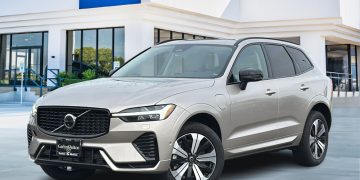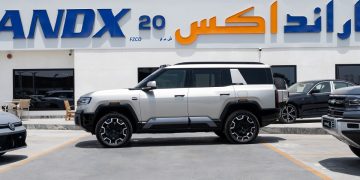The traditional idea of car ownership is facing a quiet revolution. In a world increasingly shaped by convenience, flexibility, and access over outright possession, the automotive industry is undergoing a foundational shift. Subscription-based car services—once considered a fringe experiment—are now rapidly expanding, especially among younger, urban drivers. With manufacturers like Volvo, Polestar, and Lynk & Co piloting flexible, all-inclusive car subscriptions across Europe, North America, and parts of Asia, the stage is set for a transformation that could outpace leasing by 2026. But can the subscription model overcome the deep-rooted psychological weight of car ownership? And what makes it so attractive to the new generation of drivers?
What Is Subscription-Based Car Ownership, Really?
Car subscription services are designed to offer the benefits of driving a car without the responsibilities and limitations of ownership. In practice, a subscriber pays a monthly fee that covers not only the use of the vehicle but also insurance, maintenance, taxes, and sometimes even roadside assistance. Unlike leases, which usually lock consumers into multi-year contracts with penalties for early exit, subscriptions prioritize short-term flexibility—sometimes allowing cancellations with just 30 days’ notice.
In this model, drivers can also switch between different vehicle types depending on lifestyle needs, such as opting for an SUV during winter or a compact for summer urban commuting. It’s car access as a service, rather than an asset or liability.
The concept may sound novel, but in practice, it resembles the evolution of other industries. From DVDs to streaming, CDs to Spotify, and gyms to app-based fitness subscriptions, users have increasingly chosen access over ownership. Now, the automotive world is following suit.
Volvo and Polestar: Sweden Leads the Subscription Shift
Volvo has been one of the early frontrunners in developing car subscriptions through its “Care by Volvo” program, first launched in select European markets and later expanded to the U.S. The company offers vehicles like the XC40 Recharge or XC60 via monthly subscriptions that bundle insurance, service, and tax costs into one price. For consumers, this removes much of the friction traditionally associated with car use.
In 2024, Volvo reported a 35% year-over-year increase in subscription-based signups, particularly among urban millennials and Gen Z customers. Polestar, Volvo’s electric sibling brand, has mirrored the model with flexible short-term leases and subscription platforms in high-income cities like Oslo, London, and Amsterdam. Both brands present a unified philosophy: reduce barriers to EV adoption by making the car more like a service—and less like a mortgage.
This pivot is also strategic. With electric cars requiring less frequent maintenance, brands must look elsewhere for long-term value capture. Subscription plans allow automakers to keep the vehicle in-house, extend its lifecycle across multiple users, and gather continuous driver data to improve future offerings.
Lynk & Co: Community-Driven, Not Just Contract-Free
Perhaps the boldest model comes from Lynk & Co, a Geely-owned brand positioned between Volvo and Polestar. Its flagship 01 SUV is available almost exclusively via subscription across Europe, with a community-sharing twist: if you’re not using the car, you can rent it out via the app to other verified users. The goal isn’t just to own a car—but to be part of a mobility network.
This model has resonated especially with digital natives who are used to peer-sharing platforms like Airbnb or Turo. It transforms the car from a depreciating asset into a flexible lifestyle tool. Lynk & Co has deliberately avoided dealerships, opting instead for “clubs”—urban showrooms with coffee, co-working, and community events—to build lifestyle value over vehicle prestige.
By 2025, Lynk & Co had more than 180,000 active members in Europe alone, with growth strongest in the Netherlands, Sweden, and Germany. Their success suggests that future car users may not just accept subscription—they may expect it.
The Psychological Shift: From Pride in Possession to Power in Flexibility
Historically, owning a car symbolized freedom, independence, and adulthood. But those values are evolving. For younger drivers in major cities, the idea of being tied to a five-year loan, annual insurance hikes, and uncertain repair costs is increasingly unappealing. The allure of “owning your car” is giving way to the appeal of not being owned by your car.
Subscription offers emotional and logistical freedom. No long-term debt. No haggling at dealerships. No maintenance surprises. For many, the idea of simply clicking “pause” or “cancel” on a car is more appealing than navigating trade-ins or loan terminations.

And it’s not just age or tech-savviness that drives this trend—it’s also economic reality. With inflation tightening household budgets, subscriptions provide a clearer picture of monthly costs. There’s less financial unpredictability, and greater control.
Why Car Subscriptions Could Outpace Leasing by 2026
Leasing has long been the middle ground between full ownership and temporary rentals. But its rigid structures—long contracts, mileage limits, down payments—are increasingly incompatible with the modern mindset. Younger consumers crave agility. Subscriptions offer a lease with none of the locks.
According to industry forecasts, car subscriptions are growing at a rate of nearly 23% annually, with over 6 million vehicles expected to be managed under subscription plans by 2026. Meanwhile, traditional lease growth has plateaued, especially as used car prices decline and banks become stricter with residual value risk.
Additionally, EV adoption is changing the cost dynamics. Battery degradation concerns, rapid technology updates, and uncertain resale values make leasing or subscription more attractive than owning. Between the two, subscriptions offer even greater risk mitigation.
Urbanization is another factor. In cities where parking is scarce, congestion zones are strict, and public transit is abundant, few drivers want to commit to a single vehicle year-round. Subscription fits the lifestyle: use it when needed, cancel when not.
Challenges Ahead: Scaling Without Losing Value
Despite its potential, the subscription model still faces hurdles. Profitability remains a concern for automakers. Managing a fleet of high-cost assets, ensuring timely maintenance, handling insurance logistics, and maintaining customer satisfaction are all expensive. Margins are slimmer than traditional sales or leases.
There’s also consumer education. Many still associate subscriptions with rental cars or short-term gimmicks. Overcoming skepticism will require better marketing and clearer value propositions. And in rural or suburban areas, where vehicle access is critical year-round, the benefits of flexible cancellation are less pronounced.
Regulatory landscapes also vary. In some markets, bundling insurance with car use raises legal questions, or complicates tax classification. Until these hurdles are addressed, global scalability may be limited.
What Does “Ownership” Really Mean Anymore?
Perhaps the biggest shift isn’t economic or technological—but semantic. As we move further into a digital-first economy, the very concept of ownership is being redefined. From movies to software to furniture, we are increasingly subscribing rather than buying. Cars are no exception.
For decades, car ownership was a symbol of adulthood, responsibility, and success. Today, flexibility, access, and cost-control matter more. The question isn’t “what car do I own?” but “what mobility solution best fits my life this month?”
Subscription isn’t just an alternative—it’s a signal of how people now prioritize usability over possession, adaptability over permanence, and lifestyle over legacy. As brands like Volvo, Polestar, and Lynk & Co continue refining their offerings, and as consumer trust in subscription-based life increases, leasing may well become the less desirable middle ground.
By 2026, we may not ask how much a car costs—we may ask how easily it can be swapped, shared, or paused. And for a generation that defines freedom through options, not obligations, that may be the only road worth taking.


































Discussion about this post